New York City is fascinating for many reasons, but in no small part because of its seamless integration between what was, what is and what’s going to be. For all the new condo developments and the modern architecture redefining swaths of its world-famous neighborhoods, New York is a city layered in time. And so we ask: What is it about exposed brick walls in apartments?
What’s So Great About Exposed Brick Walls?
Just like cobblestone streets that peek out from asphalt, nothing brings as many New Yorkers as close to the city’s past than brick. Exposed brick walls are a thing in many metropolises with older housing stock, but in New York, a brick wall found inside an apartment or townhouse or row house can set off Proustian waves of nostalgia. Even those of us who don’t find exposed brick walls particularly alluring have to admit that they are evocative. The rawness of brick commands attention and sometimes begs special attention. We get it.
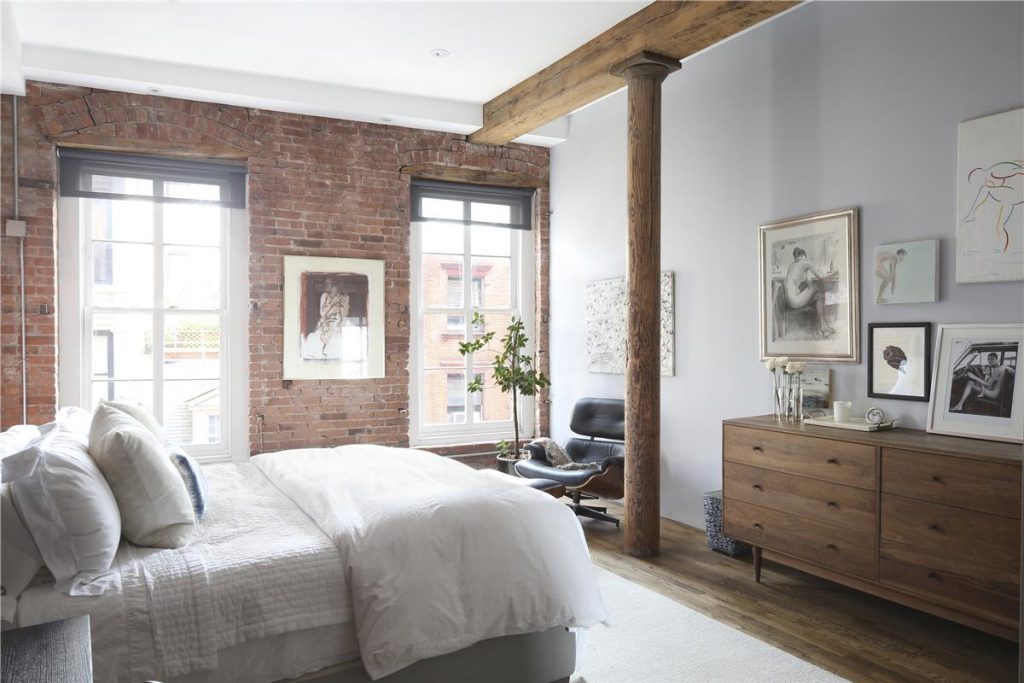
This South Street Seaport loft features many interior walls of exposed brick.
For instance: A SoHo dweller who was remodeling her loft apartment was genuinely and pleasantly surprised to find brick under the drywall. Suddenly, the idea that there was brick sent the remodeler into a small moral dilemma. Brick is interesting. The brick is there. Should the drywall be scraped in favor of exposing the brick?
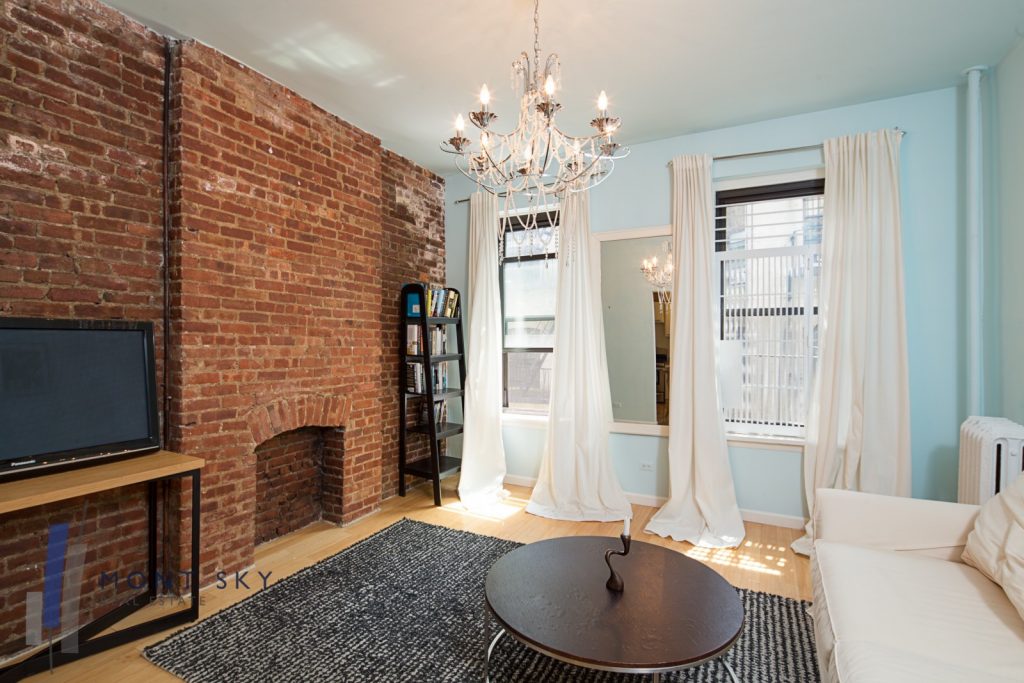
This 1-bedroom co-op on the Upper West Side shows its age and beauty nicely via exposed brick.
The answer is: not necessarily. Exposed brick is an undeniably specific aesthetic. It does require the right balance to blend brick’s timeless quality with the rest of the dwelling’s decor. However, the point is exposed brick tends to force a dialogue before letting it all hang out.
In other words, if there is a chance to have exposed brick, does that supersede other design paths because, well, in NYC, exposed brick is a THING. In fact, plenty of renters or buyers in NYC have exposed brick as part of their search criteria.
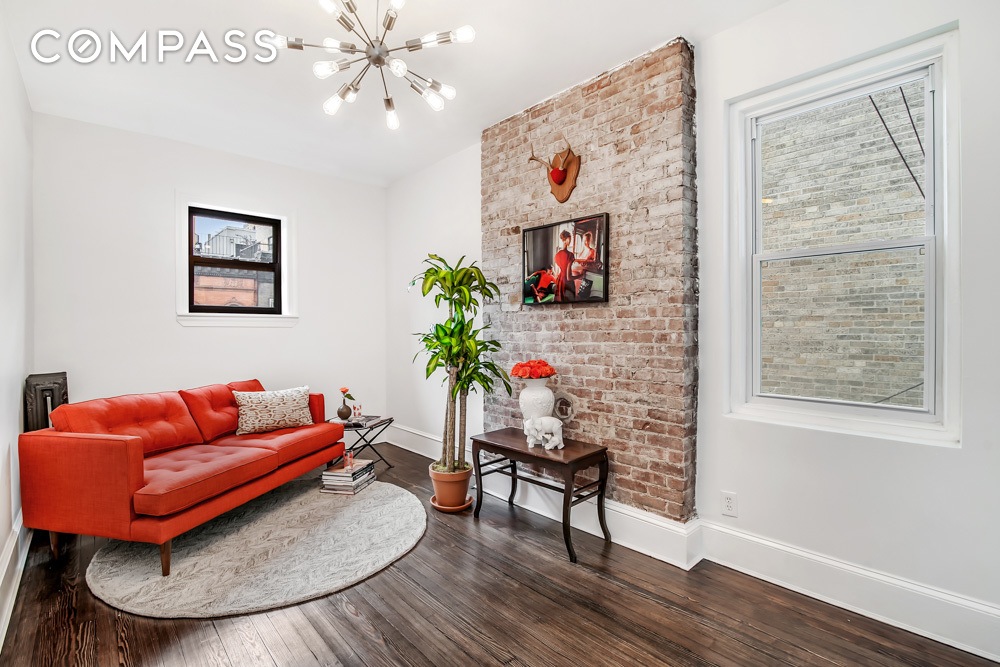
This gut-renovated UWS apartment showcases exposed brick on the fireplace wall and as an added bonus, the brick building outside the window.
“I recently showed a completely renovated apartment that had unearthed the brick. This revelation prompted my buyers looking at another apartment in the building to become even more interested because they knew brick could be exposed in that one, too,’’ said Steve Snider, Licensed Real Estate Agent with CORE.
Snider said he has shown many apartments that not only feature real brick, but many where tenants or owners have placed faux brick onto walls or other surfaces.
“It is clearly a desirable element, as I have seen a lot of pseudo-brick material being used to add loft character to apartments. Brick may not fit a heavily refined apartment on the Upper East Side, but downtown it feels at home,’’ he said.
The More You Look, the More You See Brick
Many NYC real estate agents are steeped in the brick aesthetic. It is desirable and a selling point for many renters or buyers who want to tap into the timelessness quality of exposed brick.
“Our listing at 130 Beekman Street has exposed brick and that’s one of the first things everyone comments on. Buyers know it’s not always easy to find when many of the available units are new or recent construction. There are certain neighborhoods with a lot of prewar buildings, like the West Village and South Street Seaport and buyers looking there almost expect it,’’ said Krista Nickols, an associate real estate broker at Douglas Elliman Real Estate.
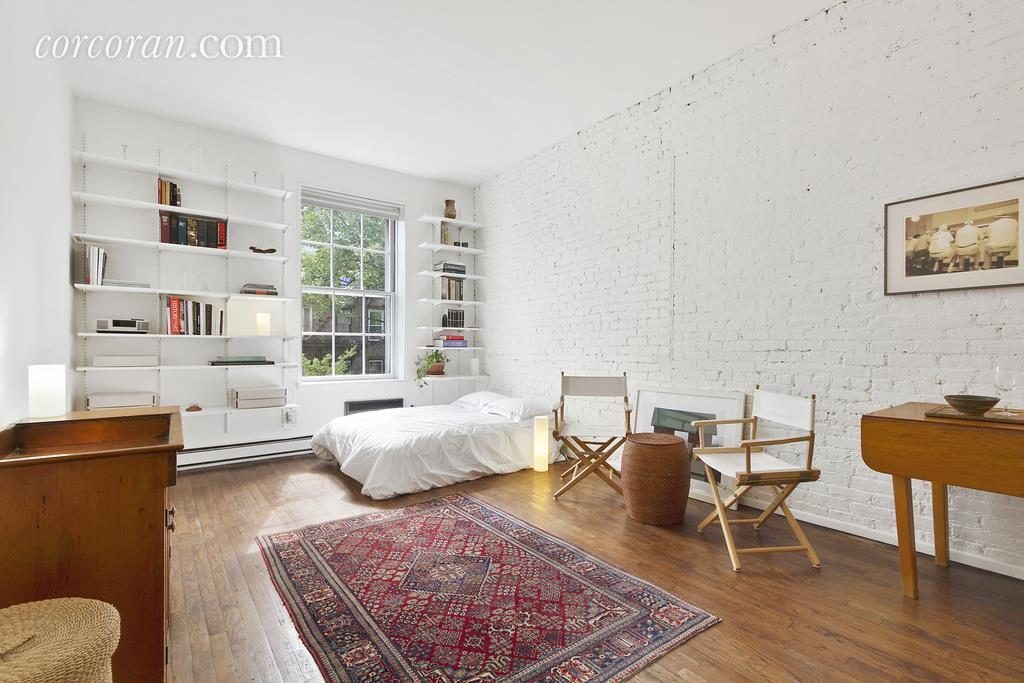
The brick interior wall of this Chelsea apartment was painted white.
Pros and Cons of Exposed Brick
There are pros and cons to consider with exposed brick, from any number of practical, aesthetic and maintenance issues. Brick is porous and can be a more touchy weather conductor, especially on an exterior wall. The mortar can require diligence in upkeep in many of the city’s turn-of-the-century buildings.
From a decor standpoint, it is not as easy to hang things on exposed brick. Many times these walls are left bare, or hung with one painting or art piece/mirror. Drilling a hook into the mortar or masonry requires a little more care and a good Google search to make sure it’s done correctly. If you’re renting, make especially sure your landlord is OK with drilling, nailing or hanging anything off the brick. You can always resort to brick clamps to avoid the whole scenario.
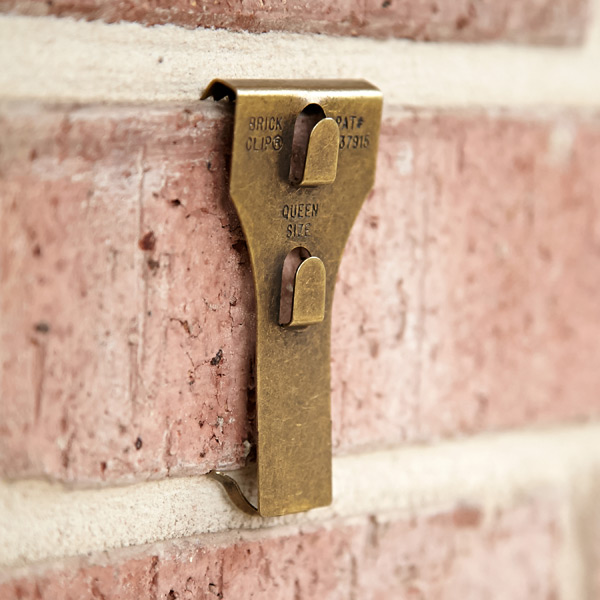
Brick clips save a lot of time and agony getting your brick walls decorated. Photo courtesy of The Container Store.
While owners of apartments with exposed brick may be willing to take on the intricacies of exposed brick, renters may be a bit wise to tread lightly when it comes to hanging stuff or altering the wall. This is especially true in the case of thinking you’d rather have the whitewashed brick sandblasted down to the bare brick, or applying white paint over bare brick to give the room texture, but take away the overtly brick look. These kinds of projects can get bigger and messier, if not a bit too toxic due to paint fumes or paint chips compromising your interior space.
Brick is a thing: It brings timelessness and texture to a dwelling. But make peace with it before you rent or buy, because the brick is not going away. Not easily, anyway.









